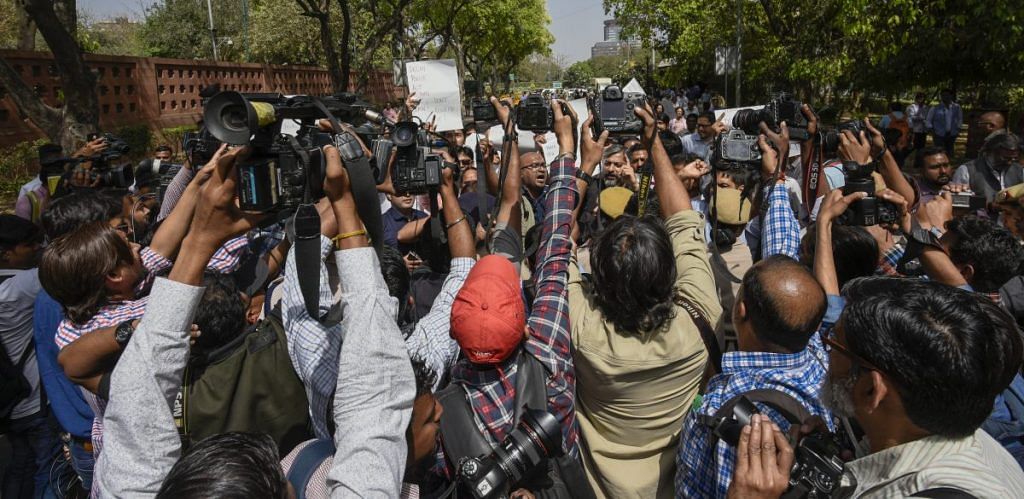Press Information Bureau wrote to the home ministry in January asking if media accreditation cards could be replaced with RFID cards to enhance security.
New Delhi: The Press Information Bureau, the central government’s nodal body for official communication, is working on a proposal to track the movement of journalists at government buildings and offices through radio-frequency identification (RFID) cards, ThePrint has learnt.
The PIB is the government’s media wing under the Smriti Irani-led information and broadcasting ministry. The ministry triggered a huge controversy with its order Monday to punish journalists for publishing or propagating “fake news”. The furore against the move caused Prime Minister Narendra Modi to order a roll-back in less than 24 hours.
In another proposal that is certain to raise the hackles of journalists in the national capital, the PIB wrote to the union home ministry in January asking if the accreditation cards it issues to journalists could be replaced with RFID cards.
The home ministry is considering the proposal, although top ministry sources told ThePrint that it could be impractical to implement.
Frank Noronha, the Principal Director-General of PIB, confirmed the move. But he also said there has been no progress on the proposal. PIB, he said, is only exploring options available for improving the security, use, look and other features of the existing accreditation card.
“We routinely explore what options are available to improve the card to facilitate free and easy entry and exit into government buildings on the basis of different technological advances,” Noronha told ThePrint in response to queries. “However, nothing has been done to this effect as yet.”
A home ministry spokesman did not respond to queries until the time of publication of this report.
What is RFID and how can it track journalists?
Press accreditation cards are issued by the government-appointed Central Press Accreditation Committee, which is headed by the director-general of the PIB. Nearly 3,000 cards are issued annually to reporters, photographers, TV cameramen and editors after a stringent vetting process.
RFID technology uses electromagnetic fields to identify and track tags attached to objects. The tags contain electronically-stored information. The technology is used in smart cards and tags such as modern-day vehicle registration certificates, driving licences, metro rail cards and even toll tags.
At present, journalists visiting government buildings have to only show their accreditation cards to the security guards. If ‘passive’ RFID is implemented, they would need to swipe/punch the card at the entrance. On the other hand, ‘active’ RFID technology would mean that a sensor picks up the frequency of the card and either lets one pass through or alerts security. Either way, the government can track journalists’ entry, exit and possibly who they are meeting.
The PIB has been contemplating increasing the security features of the card after several confidential documents were leaked from the petroleum ministry in 2015.
Problems in implementing RFID proposal
Home ministry sources said carrying out such an exercise would need massive new infrastructure and a huge budget. Security turnstile gates and other infrastructure work would have to be put in place for all the 56 buildings under the MHA’s ambit, apart from procuring RFID cards for thousands of journalists.
There would be other logistical difficulties too, such as differentiating journalists from the lakhs of other government employees accessing the buildings every day, the sources said.
The RFID proposal, or the now-aborted move to regulate fake news, are not the first such by the NDA government that give the impression it wants to regulate the media.
Earlier, the I&B ministry had issued an order warning officers to refrain from talking to the media without permissions from relevant authorities or face action, citing the PIB’s Information Dissemination Manual of 2017.
